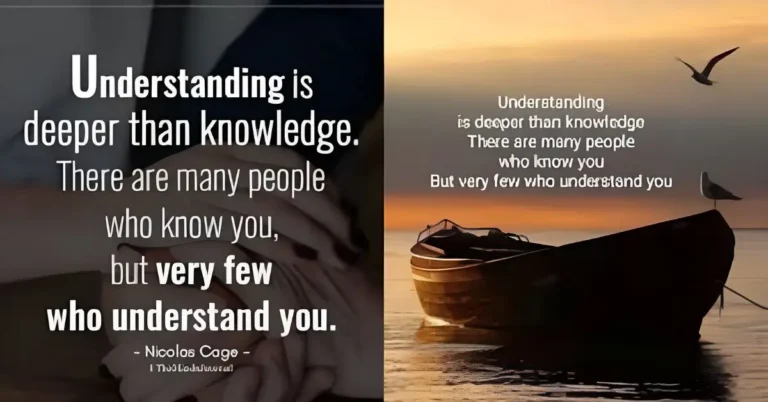Quotes are more than just words said by famous people. They’re compact powerhouses of wisdom, perspective, and emotion. But let’s be honest understanding quotes isn’t always easy. Whether you’re a student breaking down a quote for an essay, a language learner deciphering unfamiliar phrases, or a content creator searching for the perfect caption, the challenge is real.
In this guide, we’ll break down the art of interpreting famous quotes, explain how to find the deeper meaning of quotes, and share actionable tips tailored to your needs.
Why Is Understanding Quotes Important?

Quotes often carry metaphorical or abstract meaning. Misinterpreting them can lead to misunderstanding ideas or spreading misinformation.
For instance, consider this quote by Albert Einstein:
“Imagination is more important than knowledge.”
At face value, it may seem like a dismissal of education. But a proper quote analysis reveals he was emphasizing creativity as a catalyst for discovery—not downplaying knowledge.
Understanding quotes correctly helps:
- ESL students grasp cultural and linguistic nuances
- Social media creators use quotes authentically
- Researchers and students support arguments effectively
- Philosophy buffs explore ideas in depth
- Self-help readers apply inspiration meaningfully
How to Understand Quotes: A Step-by-Step Breakdown
1. Identify the Context Behind Quotes
Ask yourself:
- Who said it?
- When and where was it said?
- What was happening at that time?
Context helps unravel what quotes really mean. For example, Churchill’s wartime quotes carry weight not just because of the words, but because of the circumstances they were said in.
2. Break Down the Language Used
- Look for figurative language (metaphors, idioms)
- Identify any archaic or unfamiliar terms
- Rephrase the quote in simple terms
Example:
“The only thing we have to fear is fear itself.”
Breakdown:
Franklin D. Roosevelt wasn’t talking about literal fear—he was addressing the paralyzing anxiety Americans felt during the Great Depression.
3. Consider the Intent of the Speaker
Every quote has a purpose. Is it meant to inspire, warn, challenge, or provoke thought?
4. Relate It to Modern Life or Your Personal Experience
Understanding life quotes often means applying them to your own journey. This creates resonance and relevance.
5. Use Trusted Tools and Resources
- Merriam-Webster for language definitions
- Literary Devices for identifying metaphor, irony, etc.
- Google Scholar for academic interpretations
Quote Analysis in Action: Examples for Every Audience
For Language Learners and ESL Students
Understanding metaphorical quotes in English can be tough. Try this method:
Quote:
“A stitch in time saves nine.”
Rephrased:
Fixing a small problem early prevents bigger problems later.
Focus on:
- Literal meaning
- Cultural usage
- Example situations (e.g., fixing a leaking tap early saves plumbing costs)
For Social Media Creators
If you’re quoting for Instagram, you need clarity and context.
Tip:
Add a short caption to explain what the quote means to you.
Example:
“You miss 100% of the shots you don’t take.”
(Me: Finally applied to that job I was scared of.)
For Philosophy and Literature Buffs
Literary quote interpretation involves dissecting themes and symbolism.
Example:
“All animals are equal, but some animals are more equal than others.”
George Orwell critiques power hypocrisy in totalitarian regimes. Understanding quotes from literature and poetry like this requires knowledge of literary devices and historical context.
For Self-Help Enthusiasts
Motivational quote meaning hinges on emotional and psychological impact.
Quote:
“Fall seven times, stand up eight.”
Interpretation:
Resilience is more important than success on the first try.
Apply the quote to daily life: personal growth, career setbacks, relationships.
For Students and Researchers
Understanding quotes for essays and assignments involves:
- Author attribution (cite sources properly)
- Analyzing the quote’s role in argument support
- Cross-referencing interpretations from academic journals
Tools to Help You Understand Difficult Quotes
| Tool | Use Case |
| Quotefancy / Goodreads | Find quotes by topic or author |
| Literary Devices | Understand figures of speech |
| Cambridge Dictionary | Translate idioms and expressions |
| Genius.com (for lyrics/quotes) | Crowd-sourced quote breakdowns |
Expert Citations
- The Oxford Dictionary of Quotations – Recognized source for accurate quote origins and meanings.
- “How to Read Literature Like a Professor” by Thomas C. Foster – Explores symbolic and thematic quote interpretation.
- Harvard Writing Center Guides – Offer frameworks for analyzing quotes in academic writing.
Conclusion
Understanding quotes isn’t about memorizing lines—it’s about connecting with them. Whether you’re analyzing a literary passage, posting to social media, or finding daily inspiration, the real power of quotes comes from knowing what they truly mean.
Stay curious. Question everything. And remember: the right quote, fully understood, can change your perspective entirely.
FAQ’s
What does this quote mean in context?
Always research the speaker, occasion, and historical setting to get the full picture.
How to understand famous quotes better?
Break down the quote word by word, look up meanings, and relate them to real-life situations.
How to analyze motivational quotes deeply?
Identify the core message, and ask: what human emotion or experience is it addressing?
Why is understanding quotes important?
It allows for accurate communication, cultural literacy, and intellectual engagement.
How to explain a quote in simple terms?
Paraphrase it using everyday language. Test it by explaining it to a child or friend.
What is the meaning behind inspirational quotes?
They typically reflect universal truths about persistence, growth, or identity.
How to understand quotes for essays and assignments?
Use structured analysis: who said it, what it means, and how it supports your thesis.
How to teach quote interpretation to students?
Start with relatable examples, use visual aids, and encourage personal connection.

